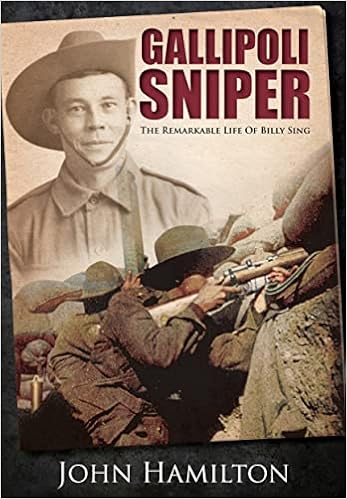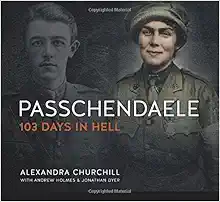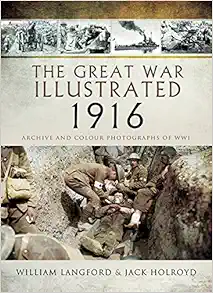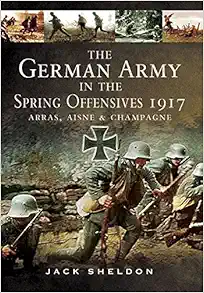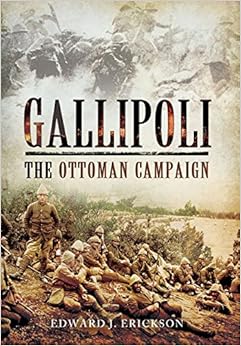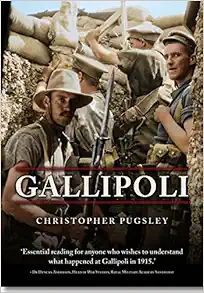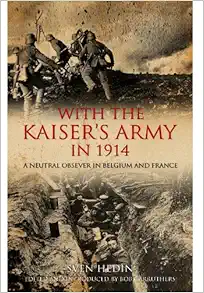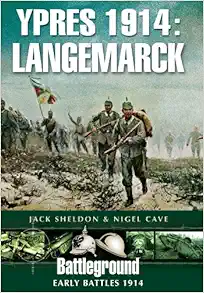The Second Battle of Ypres
By James J. Warrick
By the morning of April 22, 1915, Private Percy Kingsley, assigned to the Canadian Expeditionary Forces 5th Battalion, 2nd Brigade had been living in the trenches along the salient at Ypres for seven days. A young man from Humboldt, Saskatchewan, Canada, he was part of the first nineteen men from his town to volunteer for service in Europe. He had not slept in days given the horrendous conditions in the trenches, often sleeping on “a grave containing a number of dead Germans”.[1] The horror was only beginning and in a matter of hours, he would bear witness to a new type of warfare unlike any seen to date.
That afternoon, the Germans on the Western Front opened another series of artillery barrages along the Ypres salient. Instead of an infantry assault, what followed was a yellow-green cloud that drifted across the no-man’s land toward the Allies. The Second Battle of Ypres saw the first use of chemical weapons in war with its threat of use not taken seriously by the French and British nor was its employment taken advantage of by the Germans. This attack ushered in a new form of warfare in the 20th century and it would forever change the landscape of Europe.
The understanding of how horrific chemical weapons could be was already understood by 1899 when the major powers signed The Hague Convention.[2] The provisions under this agreement included the restriction on using any artillery shells containing gas agents. This agreement, with 60 articles governing the law of land warfare, was agreed to and signed by Germany on 29 July 1899.[3] The expectation was that all signatories would abide by the stipulations of the agreement in the event of war. Furthermore, it was expected that Germany would abide by the additional statutes of the 1907 Hague Convention.[4]
Germany’s chemical industry during World War I was producing 85 percent of the chlorine used around the world.[5] Produced by the chemical company Bayer, it was decided that as a weapon it would be very effective. Part of the decision to use chlorine came about as a need to address the shortage in late 1914 of explosive artillery shells. Proposed by Carl Duisberg, head of Bayer, the research to mass produce poison gases for use in battle was approved.[6] The debate among German commanders on its use was intense. Some felt that using chemical weapons would tarnish the reputation of Germany and make the country look evil to the rest of the world. Another concern was that if Germany used them, it would force its development and use by the Allies. In contrast, other commanders felt its use would be no different or as morally wrong as using explosive shells and machine guns.
Due to the lack of shells for artillery pieces, the decision was made to put chlorine in gas cylinders that were readily available in the thousands. In total, Germany produced over 5,700 canisters for use on the Ypres salient. Under the watchful eye of Fritz Huber, the scientist behind the weapon, the canisters were transported and placed in the front line of trenches in the southern portion of the salient. Keeping an eye on the weather, the desired result was for the prevailing winds to carry the gas across to the Allied occupied trenches.
Chairman of the German General Staff, General Erich von Falkenhayn had his reservations about the effectiveness of the weapon. His doubts stemmed from a previous attempt to use a chocking agent in shells fired against the Russians on the Eastern Front. The 31 January 1915 chemical attack in Poland failed mainly because of weather. The temperatures were so cold that the gas did not evaporate as it was supposed to. It was such a failure that the Russians didn’t bother to report it to their allies.[7]
So with expectations low, the Germans waited for the weather to cooperate and for the winds to work in their favor. However, the prevailing winds through most of the Spring did exactly the opposite of what was forecast and the canisters were moved to the salients northern perimeter.[8]
The salient, a bulge in a defensive line which is surrounded on three sides by an enemy force, had been in place and fortified over the course of the First Battle of Ypres. This battle, fought from 13 October to 22 November 1914, ended with the onset of winter weather. The stalemate allowed both sides to fortify and is often associated with the end of maneuver warfare on the Western Front. The town of Ypres sat at the center of the salient and was used by the allies as a rear staging area to move out along the line.
The British and French shared responsibility of maintaining the line with the French utilizing a number of colonial troops to include a division of Algerian soldiers and three battalions of Zouaves, a light infantry force from North Africa.[9] The Canadians would also be joining the defense with rotations taking place from the front to the rear as a reserve force, if needed, for counter-attacks. Over the course of the winter months, sporadic engagements occurred with attempts to break through the lines being unsuccessful.
It was during the course of some of these engagements that the Allied defenders of the salient were able to capture a number of prisoners to include German deserters. All of them provided details of the canisters and what the Germans had planned. Intelligence on where they were located was not passed up the chain of command, which would prove to be of severe consequence to the Allied forces. Additionally, French forward observers had witnessed the removal and relocation of the canisters from the southern sector of the salient to the north. Unfortunately, the information was not passed on to the British command who relieved them on the sector. If that were not enough, British trench-raiding troops managed to capture one of the canisters and bring it back.[10] For the Allies, it would be a grave miscalculation not to take the threat seriously and prepare for the impending attack soon to come.
Present at the front on the afternoon of April 22nd, was Fritz Huber, who supervised and was witness to the results of his months of hard work. As the gas rolled eerily across no-man’s land, confusion was followed by sheer terror as the first victims of the gas inhaled what would be their last breathes. The gas rolled across the French sector of the line manned by the Algerian and Zouaves men. Escaping would be impossible as the effects of the chlorine took hold. Unable to breathe, their lungs filling with fluid, death was painful and gruesome. Those who managed to get out of the trenches to attempt a retreat to the rear may have escaped the effects of the gas but not the artillery or machine gun fire that soon accompanied the opening of the canisters. The lucky few who managed to escape death from gas and machine gun still suffered from the effects of exposure. Chaos and confusion set in and all Private Percy Kingsley and his Canadian brothers-in-arms could do was watch as they became cut off, a four-mile wide gap now leaving them exposed.
As the German Fourth Division moved forward to occupy the now deserted trenches, they met with little to no resistance. Of course, they were not in a hurry given the positions they now moved to were filled with the dead, dying and remaining chlorine. The scene was a nightmare to witness causing many as they advanced to slow down or stop all together. Respirators provided to these men were rudimentary, at best, and the men of the Fourth were not certain the mask on their heads was going to do its job. As fear set in, the Germans allowed the gas to roll as far from them as they dared to prevent exposure. In this instance, it would seem the weapon that would have changed the Western Front was also the one that would keep it at a stalemate.
Falkenhayn, not truly understanding the gap his attack and advance had created, was never aware of the monumental victory that was within his grasp. He failed to press his troops to keep moving forward and as a result the German push in the salient ended after only two miles. The cut-off Canadians, however, saw what needed to be done. Private Kingsley writes, “We extended at right angles to our line and blocked the German advance. It was here that our boys were gassed badly.”[11] Despite that, the Canadian 5th Battalion spent the next 22 hours holding nearly 60,000 Germans soldiers back from their adjacent sector of the salient. They endured an endless artillery barrage but were successful in preventing the gap from being widened.
Once Falkenhayn realized exactly what was happening, his initiative had been lost. He suffered two setbacks, one of which was of his own doing. First, his men halting only two miles in allowed the British, French and their colonial troops to amass a force to counter attack. They did so with ferocity and managed to plug the hole in the salient with Ypres still under Allied control.
The second setback lays on Falkenhayn’s shoulders alone. His attitude towards how effective the use of gas would be was in essence, non-committal. After all, this was an experiment and could not guarantee success. The previous attempt at using gas on the Eastern Front had been a failure and Falkenhayn was not on board completely with the plan. For this reason, he failed to bring reserve forces up in preparation to support and exploit whatever gap may be opened. Inadvertently, this did work to his advantage when it came to the element of surprise. Had he amassed reserves in preparation for an attack, they certainly would have been observed by British Royal Flying Corps air patrols.[12]
By the morning of 24 April and after nearly two days of fighting, five British battalions with two Canadian battalions in reserve had the gap closed completely. A second gas attack came that day on the salient northeast of Ypres. Manned by Franco-Belgian and Canadians forces, they were subjected to the same intense artillery barrage followed by the yellow-green cloud of chlorine. The only difference was this attack came just before dawn. The Germans made some ground against the Canadian defenders, who had managed to be issued handkerchiefs to use for protection against the chlorine gas. Instructions were to wet it with whatever was available to include one’s own urine. The Germans, expecting a repeat of the first gas attack, suffered heavy losses and again, gained little ground.
For three days fighting occurs with ground being gained and lost by both sides. On one such occasion, British forces under the command of General Sir Herbert Plumer attack Hilltop Ridge, a key piece of high ground terrain needed to prevent German advances. Supported by Indian colonial forces, they commenced their advance with the support of artillery. Again, the Germans released chlorine against the advancing Indian forces, which causes them to immediately disperse. Coupled with intense German artillery fire, the British advance is stalled, inflicting 2,000 casualties.[13] Supporting the Indian forces in reserve was a regiment of French colonial troops from Senegal who had recently been brought to Europe. They were ordered to attack and witnessing the grotesque manner in which their allies from India were dying, turned on their commanders and ran, shooting any officers who ordered them to stop.[14] By the next day, the salient had shrunk, but Ypres remained under British and French control.
On the 27th of April with five days of fighting having already tired both sides, General Sir Horace Smith-Dorrien, commander of the British Second Army recommended that Allied forces pull back to reorganize and improve a new defensive line. His request goes to British commander-in-chief, Field Marshall Sir John French. French becomes furious and relieves him of command turning over his troops to the command of General Plumer. By May 1st, after suffering heavy losses in an attempt to push the Germans back, French orders Plumer to do exactly as Smith-Dorrien had requested.
The next gas attack comes on May 4th against the troops completing the withdrawal to the new lines two miles east of Ypres. By this point, gas attacks had lost their effectiveness and another stalemate was in place. The Germans had managed to flatten the bulge of the salient, but without Ypres under their control, it did nothing to advance or strengthen their position on the Western Front. French and British counter-attacks were also ineffective in recapturing lost terrain.
For the next two weeks, the war on the Western Front is again an artillery war. However, the pace of the barrages begins to slow down considerably as both sides are now low on ammunition. A last attempt to break the Ypres Salient take place on May 24th with German gas being used against the British defenders holding the Bellewaarde Ridge.[15] Although some of them are overcome by the chlorine gas, the line holds and the Germans are pushed back. With the final shots echoing in the afternoon air, the Second Battle of Ypres is essentially over.
Over the course of 32 days, the Second Battle of Ypres resulted in extensive casualties. The Germans had lost 35,000 men, the British 60,000 and the French about 10,000.[16] A new weapon and form of brutality had emerged. As was thought to happen by some German military planners, their use of chlorine gas had tarnished and damaged world opinion of their nation. Also as predicted by these same leaders, the Allies began to develop and use not only gas they created, but those captured from the Germans themselves. Over the remaining days of the war, both sides would develop new forms of chemical weapons with an estimated 190,000 tons of chemicals being manufactured.[17]
For the Germans, the Second Battle of Ypres would prove to do nothing more than result in some gained territory and the loss of life. It did nothing to change the course of the war nor did it change much on the Western Front. It did, however, prove the effectiveness of their new weapon, which was not expected. As a result, they were never able to capitalize on the tactical advantage they unknowingly had.
For the Allies, it would be a lesson learned in the value of evaluating and taking seriously that evaluation of intelligence data received from multiple sources. Had they been able to prepare themselves according to the threat intelligence they had, the entire battle may have played out completely different. It would be a lesson that would not be overlooked in future battles.
For Private Kingsley, witness to the first use of chemical weapons on a battlefield, life would be long and fruitful. He married, had three children and worked his post-World War I life in the Canadian lumber industry.[18] He would die in 1982 at the age of 96, taking with him to his final resting place the memories of the First World War; memories of a war many have forgotten but whose groans of agony still echo in the breeze of Flanders Field.
| * * * |
Show Notes
| * * * |
© 2025 James J. Warrick
Written by James J. Warrick.
About the author:
James Warrick is a retired Air Force Security Forces Senior Master Sergeant with a Criminal Justice degree and is completing his BA degree in World Military History. He lives in NJ with his wife and three kids and spends as much time on the beach as possible.
* Views expressed by contributors are their own and do not necessarily represent those of MilitaryHistoryOnline.com.

